There’s a reason I chose to call myself the Tea Break Gardener. I don’t always do everything by the book. Sometimes cutting corners is a false economy but when I decided to stop mowing the grass in my orchard to create a meadow, the benefits were obvious – for wildlife and my time economy.
Here’s a look at six plants that are enjoying the longer grass under my fruit trees.
Fritillaria meleagris – Snakes-head fritillary seed heads
Hopefully you can see the soldier-like stems and seed-heads in this picture, amongst the buttercups. Snakeshead fritillaries are so beautiful and look fabulous en masse in grass meadows. However there is little point planting them in a lawn that you feel the need to mow.
Over the last two years I’ve bought about 100 bulbs to plant under the fruit trees to try and get a colony going. As more are added each year, it’s hard to know how many are coming back but a friend has managed to get the process of naturalisation going after 3-4 years of annual plantings and allowing them to self-seed.
Mine flowered very well this year and are now developing seed-heads. When these are ripe I will pop them and sprinkle them around a wider area. I don’t intend to mow here until the autumn but even if I did, the earliest I’d mow would be late July to give a chance for the seeds to find the ground.
Dactylorhiza
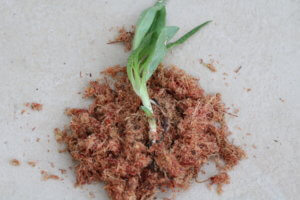
I’m not sure yet which variety of Dactylorhiza this is but it is one of many common wild orchid types such as the Marsh Orchid or Spotted Orchid.
It was a precious gift sent to me by an Alpine Garden Society member who I am yet to meet but with whom I have been in contact through Twitter and Facebook. Receiving a carefully packaged plant, wrapped in moss, was a great thrill. She’s also promised to send some seed once this sets later in the year and I can sprinkle them around in the hope of getting a colony going.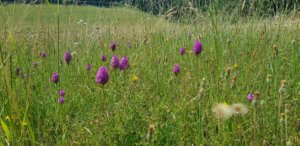
Whilst we assume that wild orchids are rare – and some certainly are – there are many common varieties that can be spotted if you look carefully. This picture was taken last June and shows a patch of orchids in a field near my home. They look so pretty and compete very well with the grasses and daisies around them.
Ox-eye daisies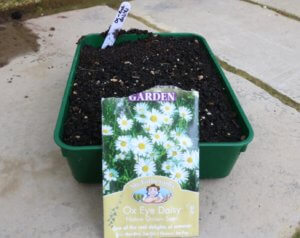
In the same field as the orchids are huge drifts of ox-eye daisies. I like to sit amongst them and hear the insects buzzing and chirpring. The field overlooks the garden of children’s author Roald Dahl and each time I sit there I think that he too explored this meadow and took inspiration from the insects there for the characters in James and the Giant Peach.
The picture below was take last summer and I’d say the field will look this way two or three weeks from now. The farmer leaves the field until early autumn before mowing.
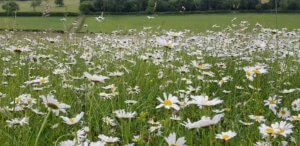
Having seen how successful Ox-eye daisies are at colonising road side verges and meadows, it’s possible that they would eventually find their way to my little orchard meadow but I’ve decided to grow a few from seed to help things along.
I was tempted to sow them direct by sprinkling them around but decided instead to raise a few little plugs to plant out into the grass once I mow in the autumn. This should get them going a bit more quickly. I sowed the packet this week and am eagerly awaiting germination.
Ranunculus acris – Common Buttercups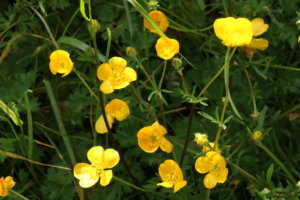
Buttercups are a favourite from childhood. We would always pick them as children and hold them up to each-other’s throats, the golden glow on the skin confirming our love for butter. The yellow beam is thanks to a sheen on the inside of the petals, as if hey have been painted in varnish. Even now I like to get close to marvel at the glow. I’m sure many people consider these weeds but if there’s ever a place for them in a garden it’s a meadow like this one.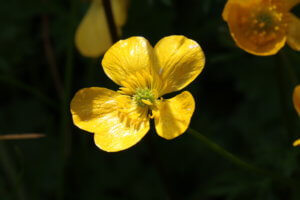
Poppy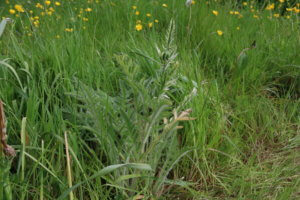
What’s great about leaving an area like this un-mown is the plants that arrive uninvited. So far there’s only one of these but it’s definitely a poppy. I’m not sure which sort but it looks more like one of the oriental varieties than one of the common field poppies.
Species tulip seed-heads – Tulipa turkestanica
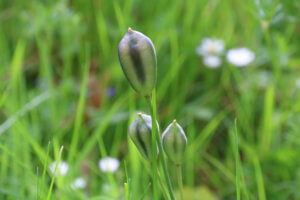
I’ve never grown species tulips before but I thought I’d give some a try. I chose these multi-headed Tulipa turkestanica as they looked very pretty in the Gee Tee Bulb Company catalogue, and planted them last November. In theory they’ll come back next year, although I’m worried how they’ll compete in this thick grass.
I certainly hope they’ll revisit. Back in March they looked very pretty, opening out their mauve flushed beigey petals in the sun to reveal a golden yellow throat. Right now the seedheads look pretty too – striped dark green and grey.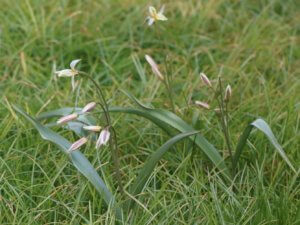
I hope to bring more updates from the meadow as the season progresses.
If you want to read other contributions to the Six on Saturday link up of gardeners click here to go to the page of host The Propagator.

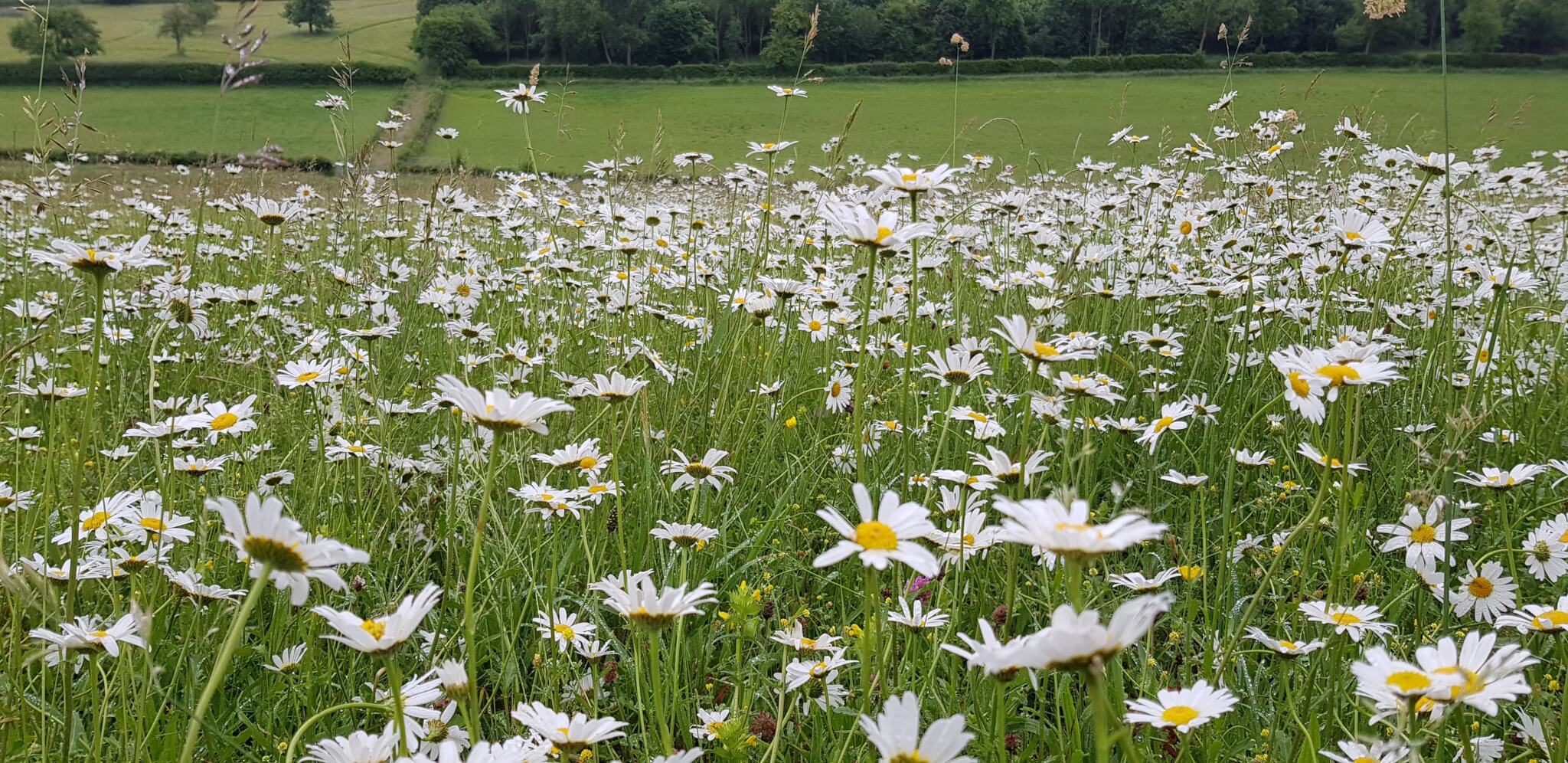
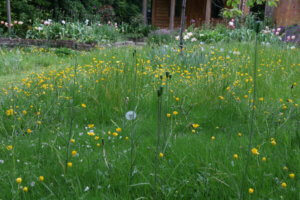


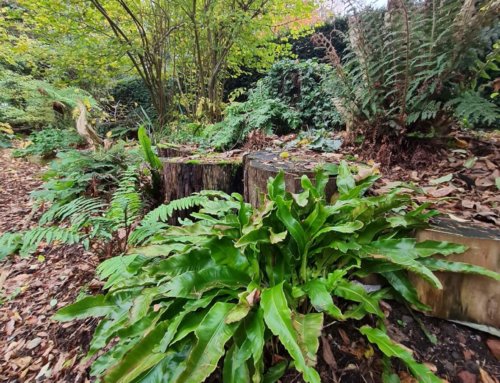
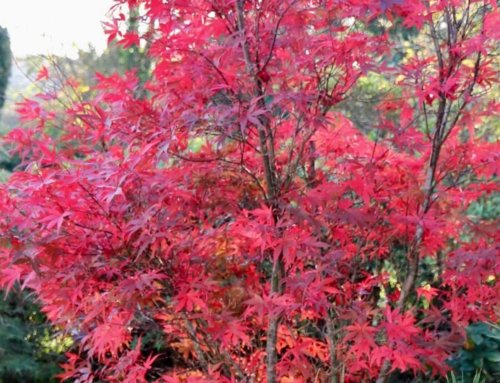
The meadow looks beautiful. I grow a few wild flowers in the garden including Ox-eye daisies. The daisies seem to stand up better growing amongst grass – mine tend to fall over in the beds!
That’s interesting that they are better in the grass. Maybe they grow a bit less tall in the grass than in the better soil of the flower bed?
To keep the grass in check grow Yellow Rattle, will be flowering in the next few weeks. I have a bulb meadow for the last six/seven years which start with Snowdrops in late January follower by fritillaries, daffodils, and finish with the common spotted orchid. Have found that the snowdrops, fritillaries and orchids are self seeding and other wild flowers are joining the mix. At present I have lovely plants of ‘ Lady’s Smock’ dotted throughout the meadow.
Mary, that is a top tip about yellow rattle. I have a big patch of it in a neglected corner of the garden so I may well grab the seed-heads when they start to rattle and sprinkle them about a bit. You’re the second person to mention Lady’s Smock. I’m hoping it’ll arrive one day in my meadow.
What a nice meadow !… Yesterday I was thinking about the seed head of snakes head fritillary. I wanted to take a close up …. I will do it soon…
By cons the photos of tulips heads similar to yours are already “in the box” and I will post them this afternoon….
I’ll keep a look out for your pictures Fred. Have you grown the same tulip turkestanica?
Posted this morning. But it isn’t the same tulip as yours. It’s tulip tarda.
I love your meadow. This year I am leaving an area unmowed under a large apple in my garden and it’s amazing what pops up including ladies smock. You have inspired me to plant some ox eye daisies.
Ah yes, the cuckoo flower – must look lovely under you apple trees as they are a similar colour to apple blossom.
I’m another fan of your meadow. The seed heads are striking & the buttercups, just gorgeous. Look forward to future updates.
I promise Lora. It’s a process down there but that makes it so exciting. Will I get the orchids going I wonder?
Walked past a garden today that had a similar area. Very colourful..
Please do keep an eye on it and let me know what flowers are there. I’m keen to see what arrives naturally but also help a few things to get going.
What a lovely collection. Stopping cutting the grass is a relatively rare example in the garden where doing less work results in a better result! I would love it if the farmers here left meadows to go wild but it isn’t really the way they like to work sadly.
You’re right about the less effort in = more benefit out. Just today I passed a verge where the town council had put a sign explaining that they were leaving it until September to mow to allow wildflowers to colonise. They’re saving money and hopefully benefitting wildlife.
It’s beautiful! So much more so than a mowed lawn!
Thanks Lisa. Up close it does look quite messy but it’s worth it for the flowers and there’s always something buzzing down there.
Buttercups have got to be one of my favourite flowers. So vibrant and pretty.
Paul, vibrant is a great word to describe them. I can never get over how shiny the inside of the petals is. I can’t think of another flower quite so shiny.
Oh I love this meadow! What a brilliant idea and you have done a great job so far. I can’t wait to see it develop.
How lovely to have room for an orchard and a wild flower meadow. One of the NT gardens near me have a patch – I know there are poppies, I shall have to see what else they grow there. Ragged Robin is a meadow plant I think.
Such a beautiful meadow. Your blog makes for a very relaxing read too. Looking forward to reading more and seeing your meadow develop.